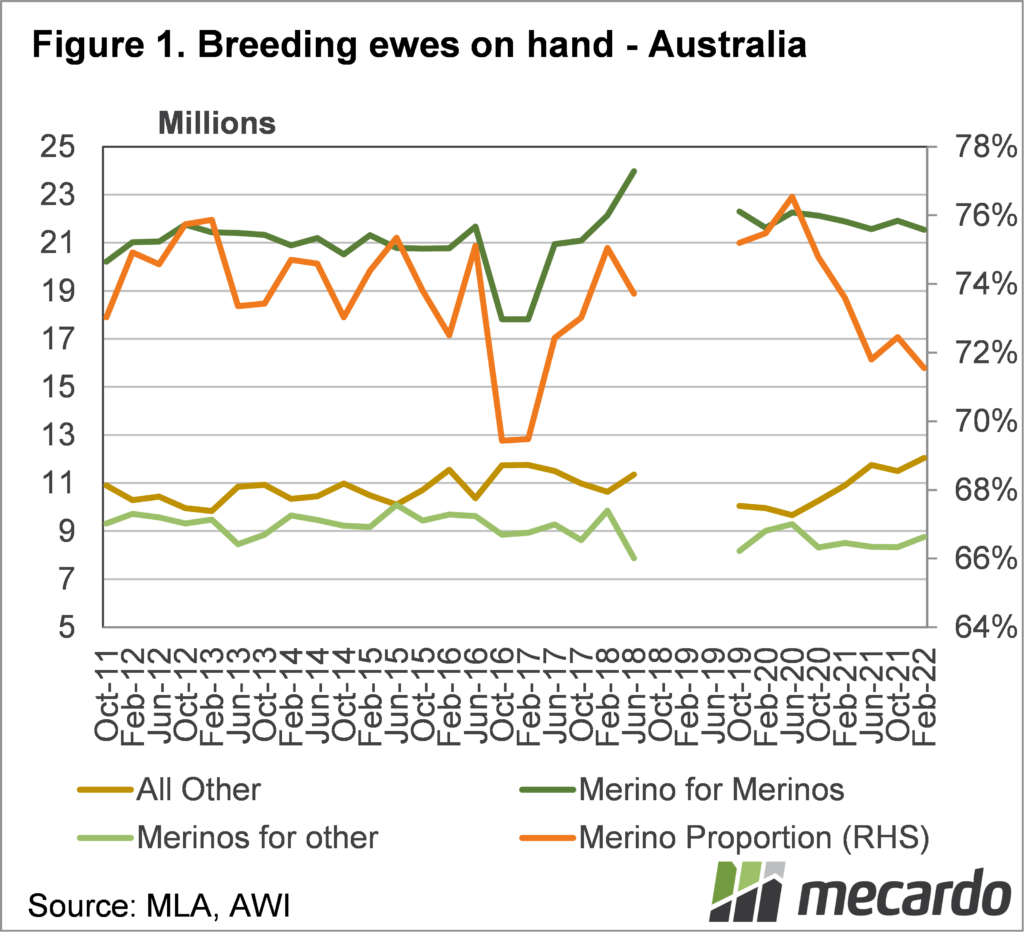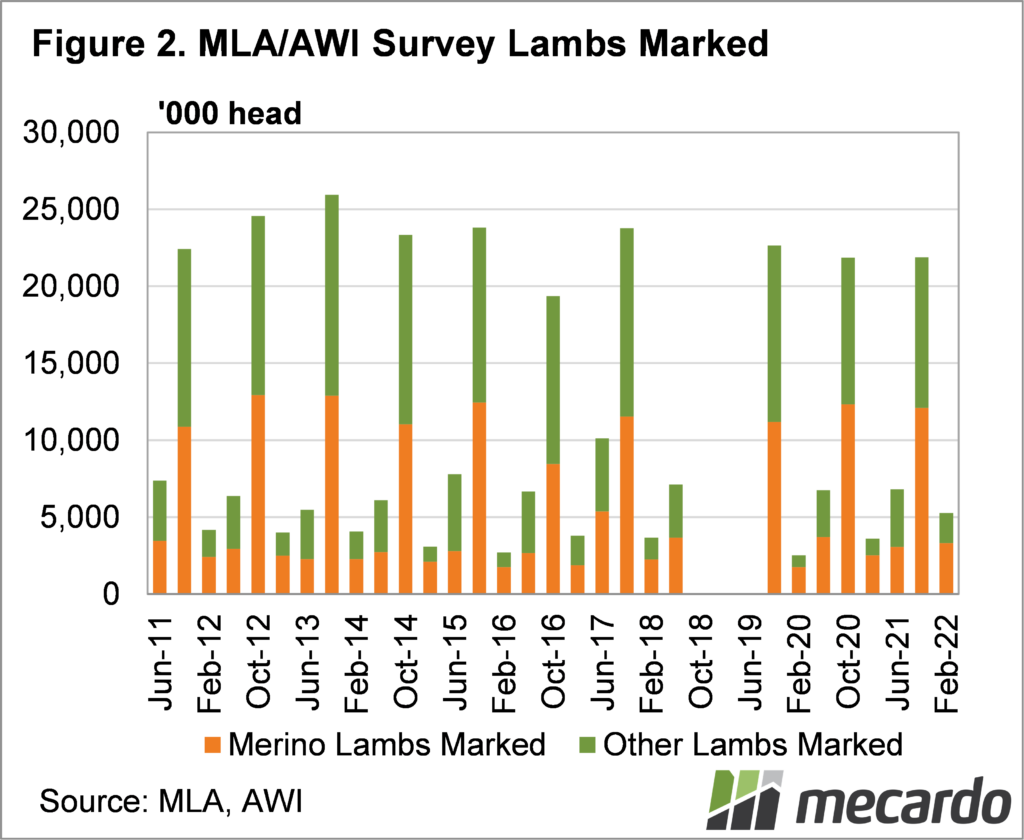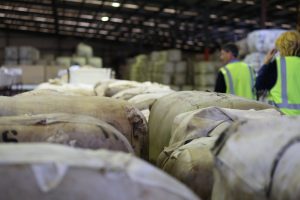Summer isn’t the prime time for lamb production, but we can still get some highly relevant information from the Australian Wool Innovation (AWI) and Meat and Livestock Australia (MLA) February survey.
The result for the February survey were released last week and there is a great raft of data to sift through, (Here we take a look at the big picture supply measures for ewes and hand and lambs marked.
February is traditionally the smallest lamb production third (the survey is done three times a year), but the numbers give an idea of how the supply of early new lambs might perform.
What is probably more relevant in terms of 2022-23 lamb supply is the numbers of breeding ewes on hand. These numbers tell us how many ewes producers have carried over summer, and are going to join for a lamb in 2022.
The number gleaned from the February survey show breeding ewe numbers on the rise, as expected. It’s hard to compare across seasons, but the survey did show breeding ewe numbers were up 1.4% on the October numbers, and more importantly, 2.6% on February 2021. Total breeding ewe numbers at 42.35 million head puts them at their highest level since the survey started in 2011, apart from a couple of surveys in 2018, which look a little out of whack now.
Also as expected, the extra ewes are for meat production, not wool. Figure 1 shows Merino ewes for joining to Merino rams, Merino ewes for other rams, and total other ewes. Merino ewes for joining to Merinos are down 1.6% on last year. Merinos for joining to other rams were up 3.1% and ‘Other’ ewes were up 9.1%. The ‘Other’ breeding ewe flock is now at it’s strongest level since the survey began.
Figure 2 shows lambs marked in the four months to February, and the numbers solidly reflect the better season. Total lambs marked were up 46%, with Merinos up 31% and other lambs up 83%. The total increase was in the order of 1.66 million head over the February 2021 survey.
You can view the full survey report here MLA/AWI Feb wool & sheepmeat survey 2022.
What does it mean?
We can see in figure 2 that February lamb production has never been anywhere near this strong, and it means there will be many more lambs hitting the market in late winter and early spring. This will likely limit price rises during what is usually a strong price period.
The breeding ewe numbers paint an interesting longer term picture for wool and lamb production. There is no doubt lamb slaughter will increase, but fine wool production isn’t going to rise as quickly, with the flock rebuild focused on the meat side of the equation.
Have any questions or comments?
Key Points
- The latest MLA/AWI sheepmeat survey report shows the flock is growing.
- There were more Merino lambs marked, but Merino breeding ewes fell.
- Other breeding ewes numbers rose strongly, suggesting stronger lamb supply in the coming year.
Click on figure to expand
Click on figure to expand
Data sources: MLA, AWI, Mecardo














